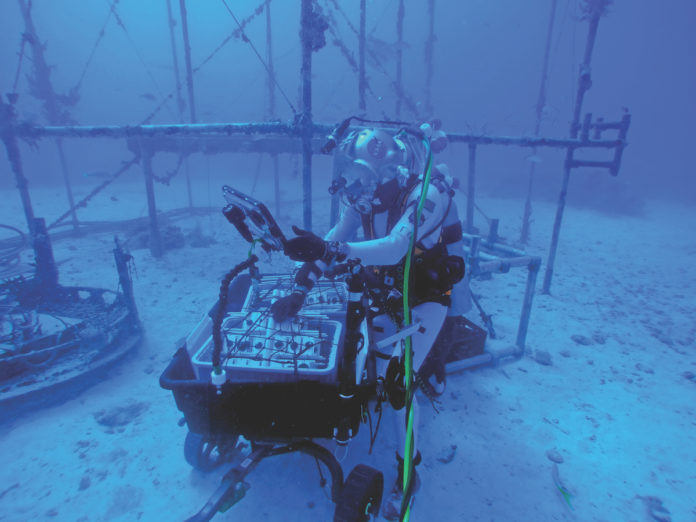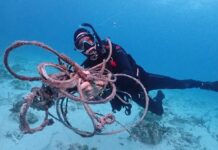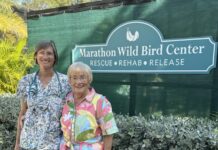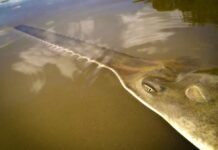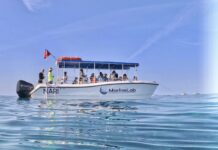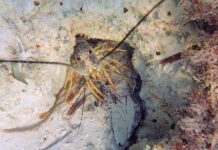Just 5.4 nautical miles offshore from Tavernier is a reef known as Conch Reef. Situated approximately 63 feet beneath the surface and surrounded by spur and groove coral formations is the world’s only undersea research laboratory, Florida International University’s Aquarius Reef Base.
The National Oceanic and Atmospheric Administration (NOAA) originally deployed Aquarius in Salt River Canyon off St. Croix, USVI in 1987. Thirteen missions were conducted in 1988-89 until Hurricane Hugo devastated the island on September 18, 1989. Aquarius was recovered in 1990 and underwent a three-year refurbishment in Wilmington, North Carolina. The undersea lab was redeployed on Conch Reef in 1993.
By providing extended access to one of the most biologically diverse ecosystems on Earth, Aquarius serves as a unique platform to conduct cutting edge marine science research, facilitate innovative educational programming, and train specialized divers, such as astronauts. The habitat is a 43-by-10-foot diameter steel cylinder divided into three compartments: The wet porch, which provides direct access to the sea, and two pressure locks known as the entry and main lock, which are 500- and 1,400-cubic-feet respectively.
Beginning June 13, Aquarius will serve as the home base for a four-woman science crew and two male habitat technicians. This mission will simulate space exploration with a focus on objectives that prepare astronauts for missions to the International Space Station and, eventually, to the Moon and Mars. This mission, NASA’s Extreme Environment Mission Operations (NEEMO) 23, is a continuation of NEEMO missions that have been conducted at Aquarius since 2001. Since operations are not simulated, astronauts are immersed in a realistic analogue that often exceed what they experience through other forms of training.

Commanding the NEEMO 23 mission will be Samantha Cristoforetti, from the European Space Agency. She holds the record for the longest uninterrupted spaceflight of a European astronaut. Cristoferretti was involved in Expeditions 42 and 43 where she spent 200 days living and working in the extreme environment of space.
The other female crewmembers include Jessica Watkins, a NASA astronaut candidate, Shirley Pomponi, a research professor at Florida Atlantic University who studies sponges and their potential in drug development, and Csilla Ari D’Agostino, assistant professor of neurosciences at the University of South Florida, who will study the psychological effects of living underwater for an extended period of time.
In addition to being tasked with space exploration objectives, aquanauts will engage in relevant marine science research. For the fourth consecutive year, NASA’s Astromaterials Research and Exploration Science (ARES) Division has teamed with FIU’s Integrative Marine Genomics and Symbiosis (IMaGeS) Lab to better understand coral reef restoration efforts. Using the extended bottom times afforded by Aquarius, aquanauts can get a lot of work done.
“Physiologically, there is no limit to how long people can spend in saturation while living underwater at Aquarius,” said Catherine Guinovart, Coordinator of Administrative Services for FIU’s Center for Coastal Oceans Research. “This mission will last nine days, but the longest we ever conducted lasted 31 days. The true gift of Aquarius is in the amount of bottom time the divers can have during these missions. Normally when people are diving from a boat at the surface, they can only be on the bottom for a short amount of time before they need to go back to the surface to avoid decompression sickness, but when people are saturated aboard Aquarius they can dive for up to nine hours a day in depths of up to 95 feet.
Riley Hatch, Ph.D. student in FIU’s IMaGeS lab and part of the surface-based support team, says his team is interested in better understanding the effects that nearby fish communities, and their associated nutrient contributions, have on the composition, function and health of coral symbioses with microbial and algal assemblages.
“After the conclusion of the four-year study, the corals will be out-planted on surrounding reefs, thus enriching the genetic variation and increasing coral presence in this critical ecosystem,” Hatch said.
To aid in the study, the Coral Restoration Foundation will provide coral trees and boulder coral fragments on the Aquarius Reef Base. Prior to the mission start, the CRF team will give the astronauts land-based training on how to assemble, install, and attach coral fragments to the structures. Once the mission begins, astronauts will prepare the study site by attaching boulder coral fragments to PVC trees, erected in a sand plain near Aquarius.
“These unique coral tree nurseries will provide coral restoration practitioners with vital data to help save coral reefs around the world. We are thrilled to be part of this extraordinary mission,” said Amelia Moura, Coral Restoration Foundation science program manager. “The environment at the Aquarius Reef Base is completely different from where we traditionally grow our corals. This makes it an exciting opportunity to further understand how different coral species and different genetic strains within certain species react to different environments, different fish communities, and different light conditions.”















